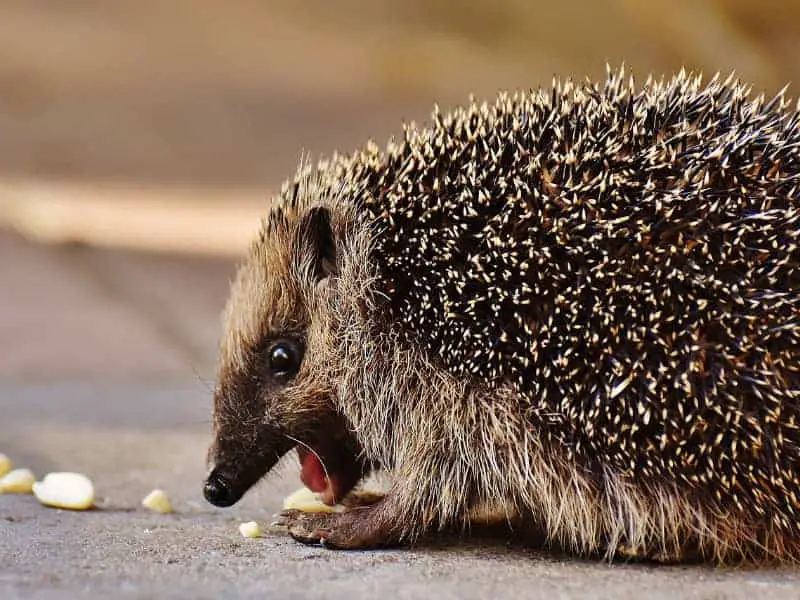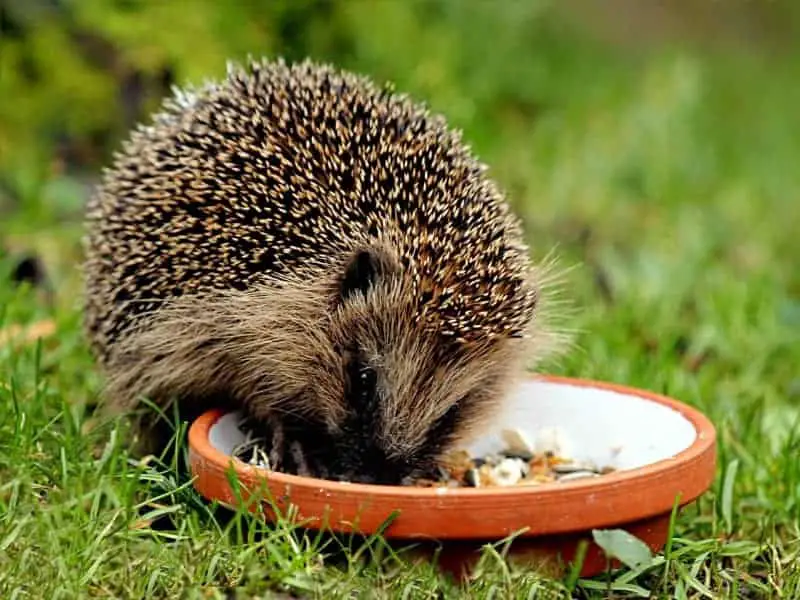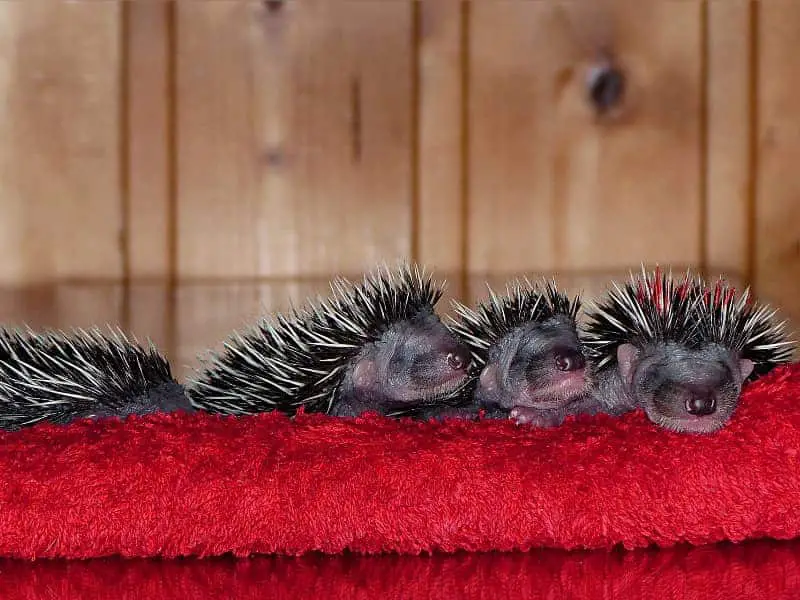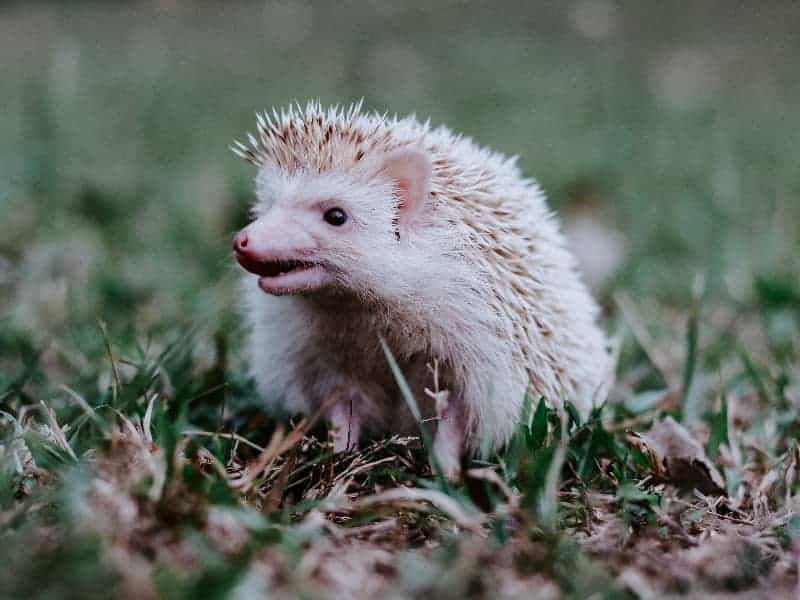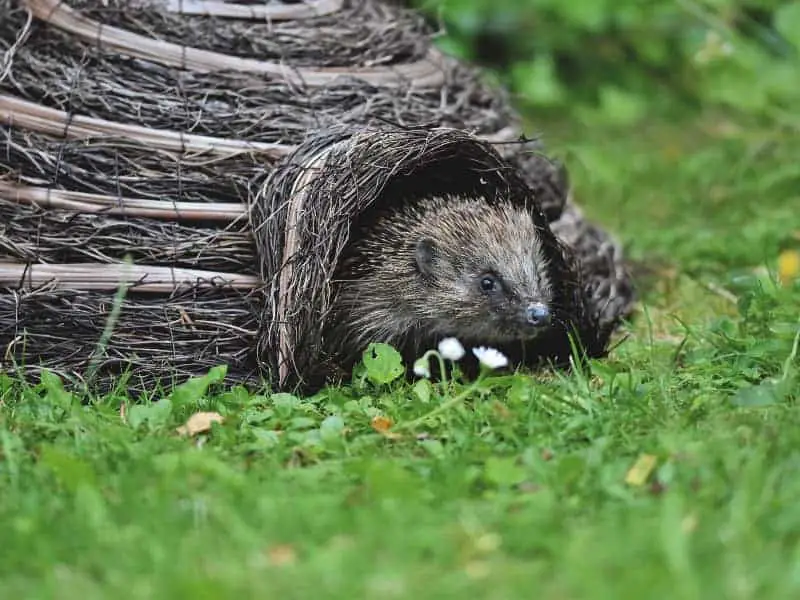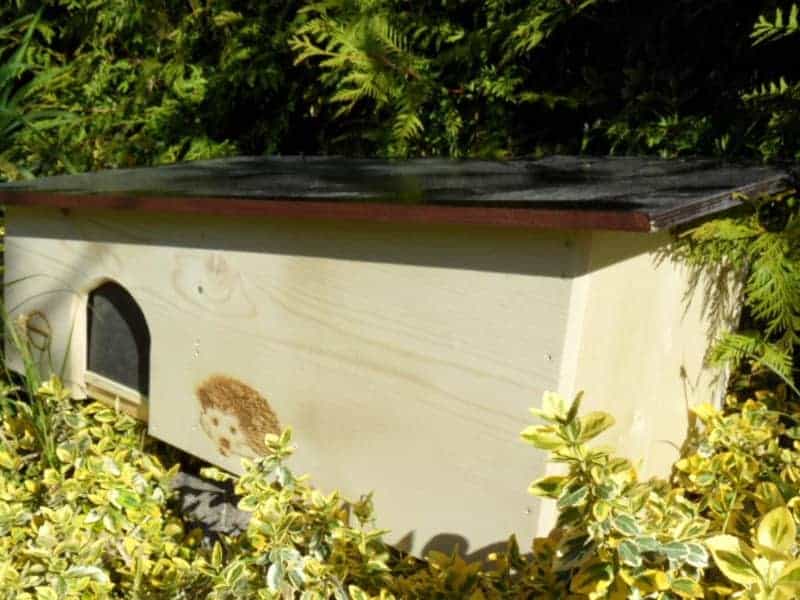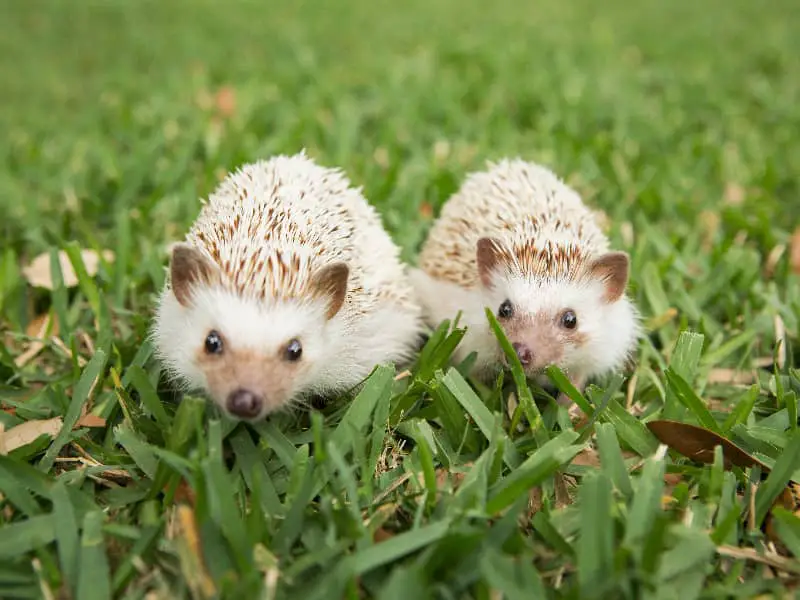
Dried insects for hedgehogs
Today we will dive deep into the fascinating world of hedgehog nutrition. From general nutritional needs to the important role that dried insects play in hedgehogs' diets, we'll go over all aspects. You'll also learn when and why it makes sense to feed hedgehogs.
Nutritional needs of hedgehogs
Hedgehogs are small mammals that enjoy a very varied diet. They eat a wide range of foods, from insects and worms to plants and fruits. The nutritional needs of a hedgehog are quite complex, with animal proteins playing a key role.
A balanced diet plan for hedgehogs should therefore include a variety of foods to ensure they get all the vitamins, minerals and other nutrients they need. Hedgehog nutrition and food quality are crucial factors for the health and well-being of these prickly friends.
The role of insects in hedgehog nutrition
Insects are not only a delicacy for hedgehogs, but an essential part of their diet. Insect protein in particular is important to meet the animals' high protein requirements. Mealworms, crickets and grasshoppers are just some of the insects that should be regularly on a hedgehog's menu.
In addition to proteins, insects also provide important fats that serve as energy suppliers. They also contain vital minerals and vitamins. Insects are therefore an excellent natural hedgehog food that should not be missing from any feeding plan. Whether fresh or dried, insects are essential for hedgehog health.
When and why feed hedgehogs?
There are several reasons why hedgehogs should be fed. In the cold season, especially before hibernation, it is important that hedgehogs can build up sufficient reserves. This is where feeding comes into play. Especially in winter and early spring, when the natural food supply is scarce, targeted feeding can ensure the animals' survival.
Feeding times and amounts vary depending on the season and the hedgehog's state of health. A general feeding plan can be helpful here, but should be adapted individually. Feeding tips and close observation of the hedgehog help to optimally cover the nutritional requirements.
Why dried insects for hedgehogs?
Dried insects are not only a convenient, but also a nutritious option for feeding hedgehogs. Below we will go over the benefits, nutritional content and storage of this particular food option.
Advantages over fresh insects
Dried insects offer several advantages over their fresh counterparts. First, they are easier to store and have a longer shelf life. Since they take up less space and do not need to be refrigerated, they are a practical alternative for hedgehog owners.
The dried insects are also easily portionable, which makes feeding easier. Especially if you don't have time to constantly buy fresh insects, dried mealworms and other dried insects offer a convenient solution. The storage of insects is thus significantly simplified.
Nutrient content and quality
Drying insects preserves most of the nutrients. Protein, fats and minerals are present in dried insects in a concentrated form, which makes them a high quality food. The insect protein content is particularly important for building and maintaining muscle mass in hedgehogs.
However, it is important to choose good quality dried insects. Pay attention to feed quality and digestibility to ensure your hedgehog is getting the best nutrients. Some brands offer special hedgehog food products that contain a balanced mix of different insect species.
Storage and shelf life
One of the greatest strengths of dried insects is their long shelf life. Unlike fresh insects, which can spoil quickly, dried varieties can last for months if stored properly. This is not only practical, but also reduces feed costs and minimizes waste.
You don't need a refrigerator to store dried insects. A cool, dry place is sufficient, and many products are available in resealable packaging that preserves freshness. This way, insect storage becomes a breeze.
Of course, I'll continue now with the third heading and its associated subheadings.
Types of dried insects for hedgehogs
There are a variety of dried insects suitable for feeding hedgehogs. We take a look at the most popular varieties, their nutritional profiles and how they can be incorporated into specific hedgehog food products.
Mealworms
Mealworms are one of the most commonly fed dried insect species for hedgehogs. They are rich in proteins and fats, which makes them an excellent source of energy. However, they should not be used as the sole food, as they do not provide all the necessary nutrients in sufficient quantities.
The easy availability and the possibility to store mealworms in large quantities make them particularly attractive for hedgehog owners. They can be offered either plain or as part of a food mix. However, it is important to combine them with other insect species and food sources to ensure a balanced diet.
Barbecue
Crickets are another good option for hedgehog nutrition. They offer a slightly different nutritional profile than mealworms, including a good amount of animal protein and essential minerals. As with mealworms, however, the same applies here: Crickets should not be the only food source.
Crickets are less fatty in dried form than mealworms, making them a good choice if you want to reduce the fat content in your hedgehog's diet. They can also be offered in a food mix with other insect species to add variety and nutrition to the diet.
Locusts
Grasshoppers provide another nutrient-rich option for feeding hedgehogs. They are also rich in protein and also contain a number of vitamins and minerals. Some hedgehogs even show a particular preference for grasshoppers, which makes them a good change in their daily diet.
For storage and portioning, dried grasshoppers are as convenient as mealworms and crickets. They can be fed alone or in combination with other dried insects. Again, be sure to provide a varied diet to meet all of your hedgehog's nutritional needs.
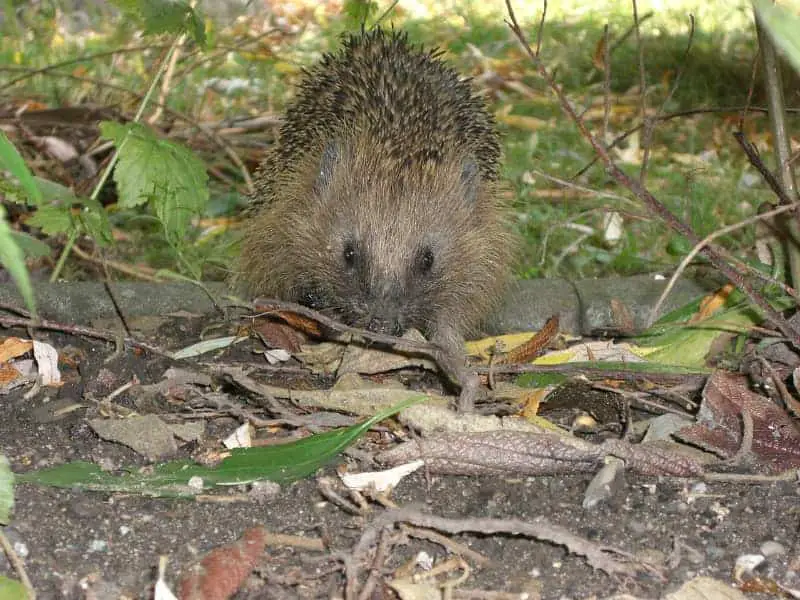
Dried insects for hedgehogs - feeding techniques
Proper feeding of hedgehogs with dried insects requires some consideration. Not only is the type of insect important, but also the feeding times, amounts, and combination with other foods. We also look at the risks that could be associated with inappropriate feeding.
Feeding times and amounts
Hedgehogs are nocturnal animals that search for their food at dusk and during the night. So it makes sense to feed them at these times. Feeding amounts can vary depending on the hedgehog's age, health and activity level. Young and very active hedgehogs need more energy and therefore a higher amount of dried insects.
It is important to monitor feeding amounts carefully to avoid overfeeding and possible weight problems. When feeding dried insects, an amount of about 5-10 grams per feeding should be used as a guide. This should of course be adjusted to the specific needs of the hedgehog.
Mixture with other foods
Dried insects should never be the only food source for a hedgehog. It is advisable to mix them with other foods such as vegetables and special hedgehog dry food. The variety of foods provides the hedgehog with a more balanced diet that covers all the necessary nutrients.
To mix with other foods, you can provide a base of dry hedgehog food, for example, and put a layer of dried insects on top. This will provide the hedgehog with a nutritious and tasty meal that contains all the necessary nutrients.
Risks of incorrect feeding
Unbalanced or excessive feeding can lead to several health problems in hedgehogs. These include weight problems, deficiency symptoms and digestive disorders. A one-sided diet consisting mainly of one type of insect is particularly problematic.
Too much of a particular type of dried insect can lead to an imbalance in nutrient balance. For example, feeding too many mealworms can lead to an excess of fats and a deficiency of important minerals such as calcium. A varied diet is therefore crucial for the hedgehog's health.
Conclusion: Dried insects for hedgehogs
Dried insects offer a convenient and nutritious addition to the diet of hedgehogs. With their high content of animal proteins and fats, they can play an important role in providing essential nutrients to these small mammals. However, it is critical to make the right selection and mix of dried insects to ensure a balanced diet.
While mealworms, crickets and grasshoppers each have their own benefits and nutrient profiles, it is advisable to combine them in a varied diet. This is not only to enhance the hedgehog's enjoyment experience, but also to avoid nutrient imbalances and associated health risks.
Proper feeding technique, including appropriate feeding times and amounts, is also important. Too much of a good thing can be just as problematic as an unbalanced diet. Therefore, feeding should be carefully monitored and, if necessary, adapted to the specific needs of the hedgehog in question.
Overall, dried insects are a valuable food source for hedgehogs, but should be used wisely. They can play an important role in a well-designed nutritional strategy aimed at the hedgehog's health needs and welfare.
Author

-
Garden animal - A life with nature
Welcome to my animal blog! My name is Dirk and I am happy to take you on my journey through the fascinating world of animals and gardening.
Born 54 years ago, I have had an insatiable curiosity for the animal world around me since childhood. Although I have moved professionally in other industries, my true passion has always been animals and nature. It is remarkable how a small garden has become such an important part of my life.
Many of my fondest memories are associated with the animals that share our home. Whether it's the curious squirrels that scurry across the trees in the morning, the colorful variety of birds that visit our feeders, or the busy bees and butterflies that pollinate our flowers, every moment with them is invaluable to me.
This blog is my contribution to share my experiences, discoveries and insights with like-minded people. Here I will share stories of unforgettable encounters with animals, give tips on gardening and creating wildlife-friendly habitats, and take you on my journeys through nature.
Thank you so much for being here!
Cordial,
Dirk aka garden animal
Last posts
- 27. February 2024PetsVeganes Hundefutter – Grün und Gesund?
- 18. January 2024ChickensOregano für Hühner
- November 27, 2023HamsterDiurnal hamsters
- November 24, 2023HamsterHamster hammock

